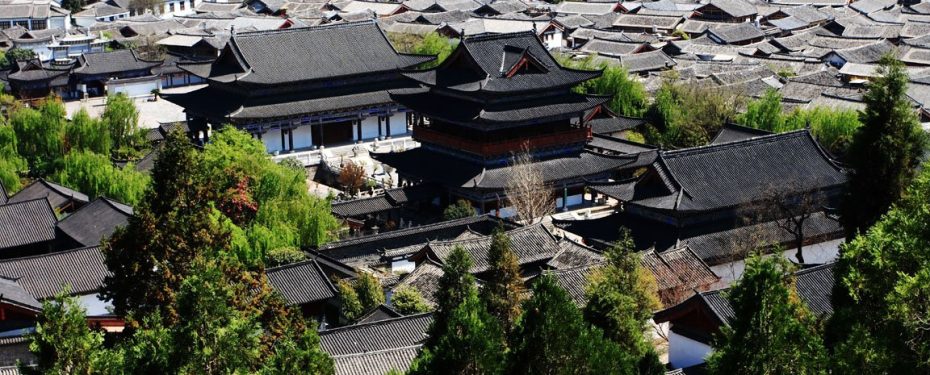Mu’s Mansion
Nestled in the heart of Lijiang, a UNESCO World Heritage Site in China’s Yunnan Province, lies the magnificent Mu’s Mansion (Mufu), a captivating testament to the rich cultural heritage and artistic prowess of the Naxi people. This grand complex, once the residence of the influential Mu clan, is a must-visit destination for travelers seeking to immerse themselves in the architectural splendor and cultural tapestry of ancient China.
Table of contents
Introduction to Mu’s Mansion
Mu’s Mansion, also known as Mufu or Mu Family Compound, is a remarkable example of traditional Naxi architecture, blending elements of Han, Bai, and Tibetan styles. Dating back to the late 16th century, this sprawling complex was the former residence of the Mu clan, a powerful ruling family that played a pivotal role in the political and cultural landscape of Lijiang during the Ming and Qing dynasties.
Architectural Marvels of Mu’s Mansion
The Grand Courtyard
Upon entering Mu’s Mansion, visitors are greeted by the grand courtyard, a vast open space that serves as the heart of the complex. This central area is surrounded by a series of intricately designed buildings, each showcasing the exceptional craftsmanship and attention to detail that characterize Naxi architecture.
The Main Residence (Zhengjing Lou)
The centerpiece of Mu’s Mansion is the Main Residence, also known as Zhengjing Lou. This imposing three-story structure is a true architectural masterpiece, featuring intricate woodcarvings, ornate stone carvings, and vibrant frescoes that adorn its walls and ceilings.
The Flower Rooms (Huayuan)
Adjacent to the Main Residence, visitors can explore the Flower Rooms, a series of beautifully decorated chambers that were once used for entertaining guests and hosting important events. These rooms are adorned with exquisite murals and carvings, depicting scenes from Naxi folklore and mythology.
The Dongba Cultural Exhibition Hall
Within the grounds of Mu’s Mansion, visitors can delve into the rich cultural heritage of the Naxi people at the Dongba Cultural Exhibition Hall. This dedicated space showcases the unique Dongba pictographic writing system, a UNESCO-recognized Intangible Cultural Heritage, as well as traditional Naxi costumes, musical instruments, and artifacts.
Exploring the Murals of Mu’s Mansion
One of the most captivating aspects of Mu’s Mansion is its stunning collection of murals, which adorn the walls and ceilings of various buildings within the complex. These intricate frescoes, created by skilled Naxi artisans, depict a wide range of subjects, from religious and mythological scenes to depictions of daily life and cultural traditions.
The most notable murals can be found in the following locations:
- The Main Residence (Zhengjing Lou): This building houses some of the most impressive murals, including the “Hundred Horses Mural” and the “Peony Mural,” showcasing the artistic mastery of Naxi painters.
- The Flower Rooms (Huayuan): The murals in these chambers are characterized by their vibrant colors and intricate details, depicting scenes from Naxi folklore and mythology.
- The Dongba Cultural Exhibition Hall: Here, visitors can admire murals that illustrate the unique Dongba pictographic writing system and the spiritual beliefs of the Naxi people.
Practical Tips for Visiting Mu’s Mansion
Best Time to Visit
The best time to visit Mu’s Mansion is during the spring (March to May) and autumn (September to November) seasons, when the weather is mild and the surrounding landscapes are at their most vibrant. These periods also offer the opportunity to witness traditional Naxi festivals and celebrations.
Getting There
Mu’s Mansion is conveniently located within the Old Town of Lijiang, making it easily accessible by foot or by taking a short taxi ride from the city center. Visitors can also join guided tours that include transportation and knowledgeable guides to enhance their experience.
Entrance Fees and Opening Hours
The entrance fee for Mu’s Mansion is approximately 80 CNY (around $12 USD) for adults and 40 CNY (around $6 USD) for children. The mansion is open daily from 8:00 AM to 6:00 PM, with extended hours during peak seasons.
Guided Tours and Audio Guides
To fully appreciate the historical and cultural significance of Mu’s Mansion, consider hiring a local guide or renting an audio guide. These resources can provide valuable insights into the architectural details, mural interpretations, and the rich history of the Mu clan and the Naxi people.
Photography and Etiquette
Mu’s Mansion offers ample opportunities for photography enthusiasts to capture stunning images of the architecture, murals, and intricate details. However, it’s important to respect the cultural and historical significance of the site by following proper etiquette:
- Refrain from using flash photography inside buildings to protect the delicate murals and woodcarvings.
- Dress modestly and cover your shoulders and knees when visiting the mansion.
- Maintain a respectful demeanor and avoid loud or disruptive behavior.
Mu’s Mansion is a true gem in the heart of Lijiang, offering travelers a captivating glimpse into the architectural grandeur and cultural richness of the Naxi people. With its intricate woodcarvings, vibrant murals, and well-preserved traditional buildings, this magnificent complex promises an unforgettable experience that will leave you in awe of the artistic and cultural heritage of ancient China.
Call: (+86) 135 7702 4672 | Email: sales@travelchinawith.me
© Copyright 2012 - 2024, TravelChinaWith.Me | Hosting by ChemiCloud





